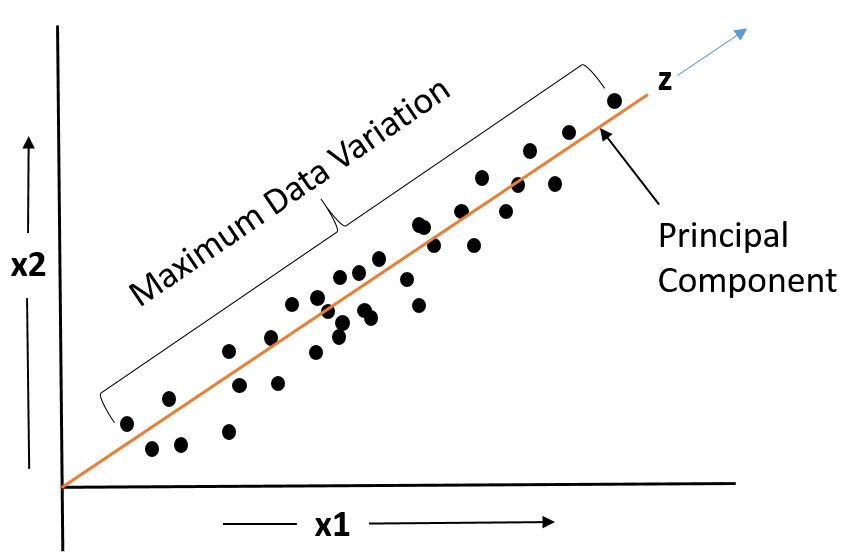The principal component analysis method
PCA is one of the most popular methods used for dimensionality reduction. In a real-world scenario, we have thousands of dimensions in which a data point is explained. However, it is possible to reduce the number of dimensions without the loss of significant information. For example, a video camera captures the scene in three-dimensional space and it is projected onto a two-dimensional space (TV screens); despite the elimination of one dimension, we are able to perceive the scene without any problems. The data points in multidimensional space have convergence in fewer dimensions. As a technique, PCA focuses on getting a direction with the largest variance between the data points while getting to the best reconstruction of the dataset, without losing information. Let's illustrate this with a two-dimensional dataset:

Figure 3.17 Illustration of Principal Component
This is a two-dimensional dataset where a data point is uniquely defined by x1 and x2 values...







































































